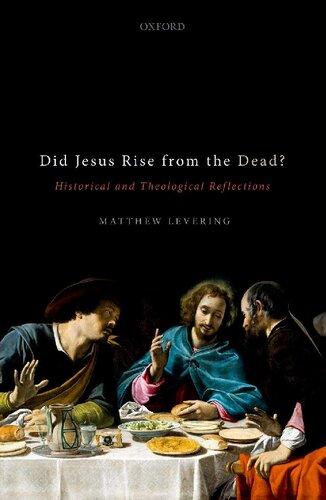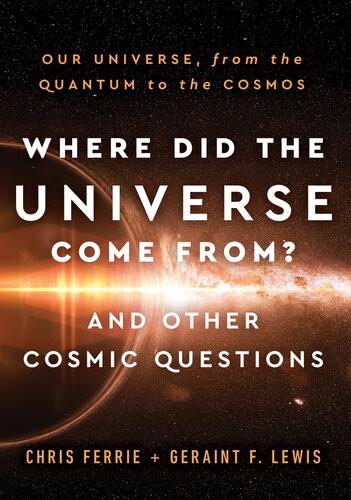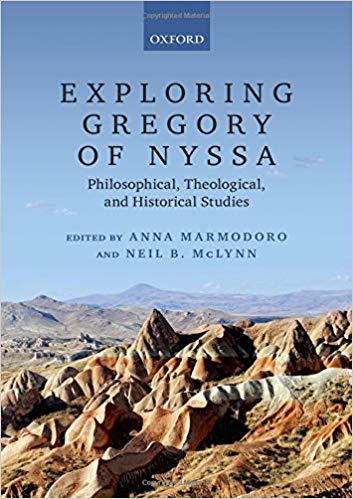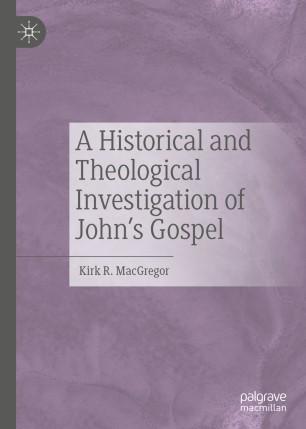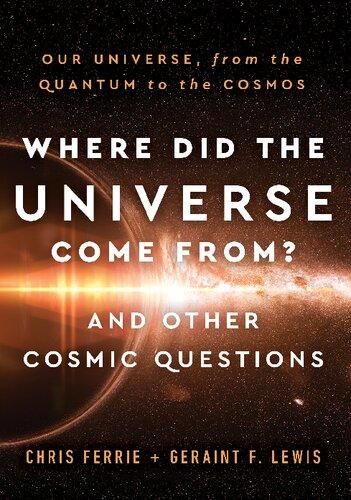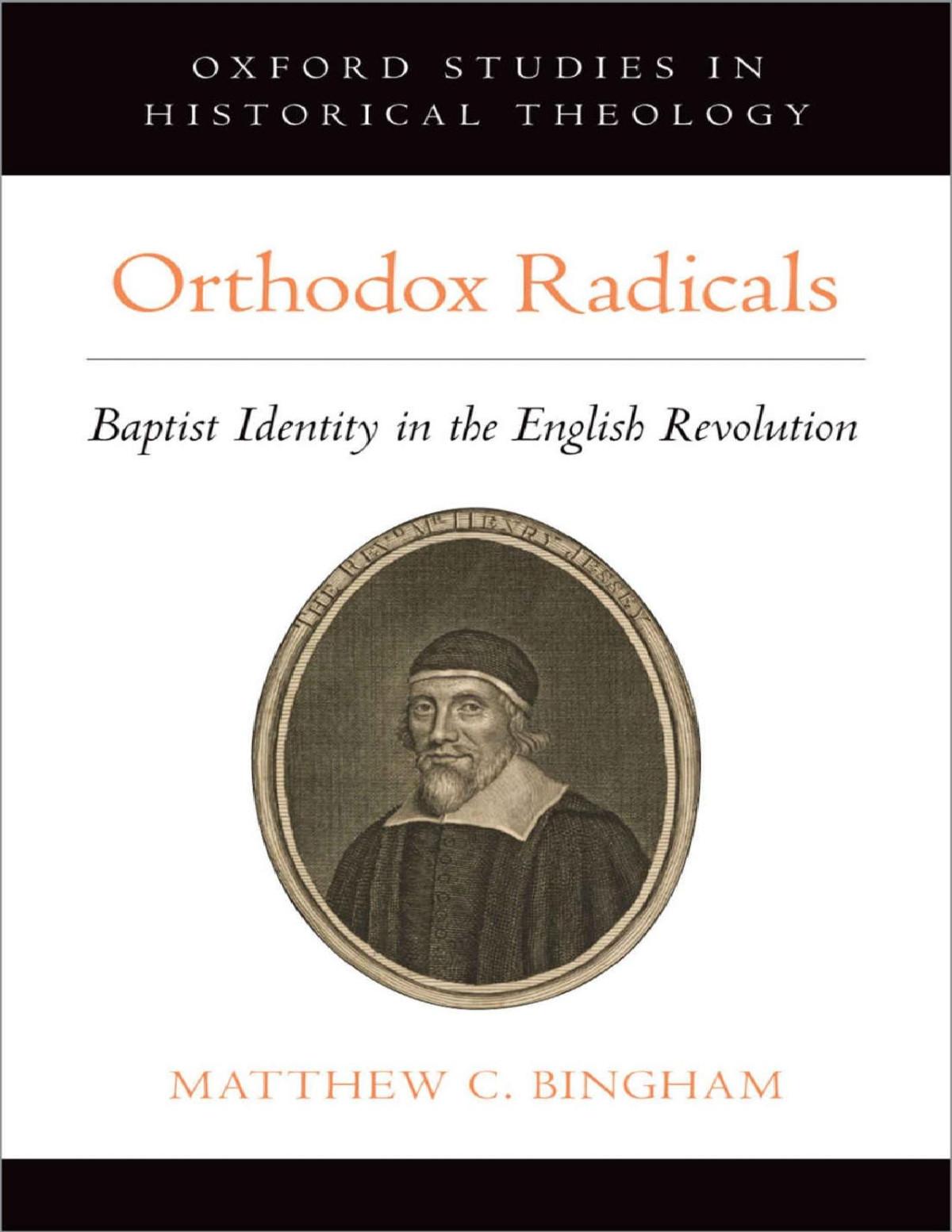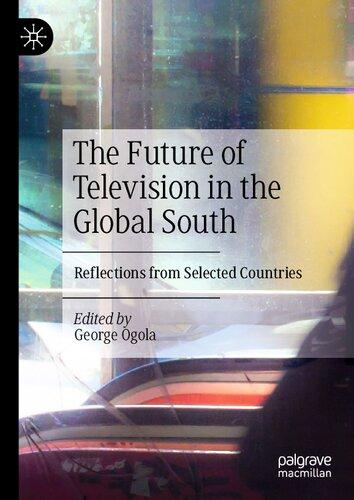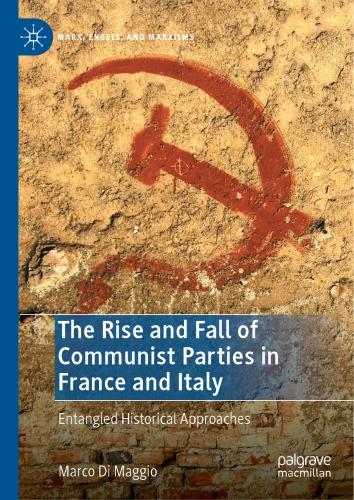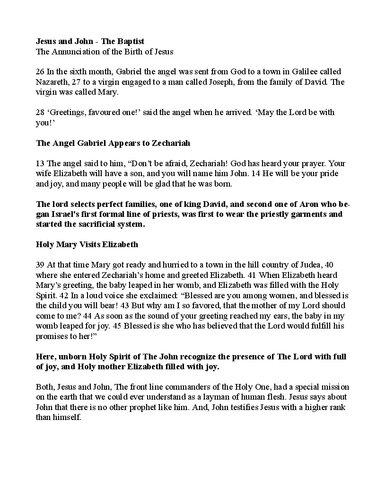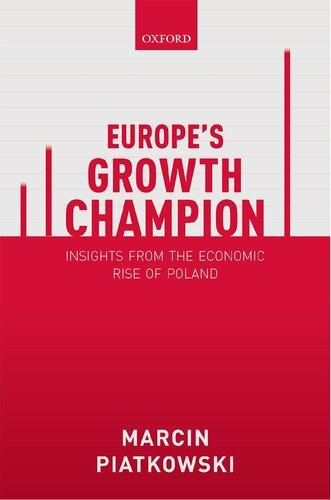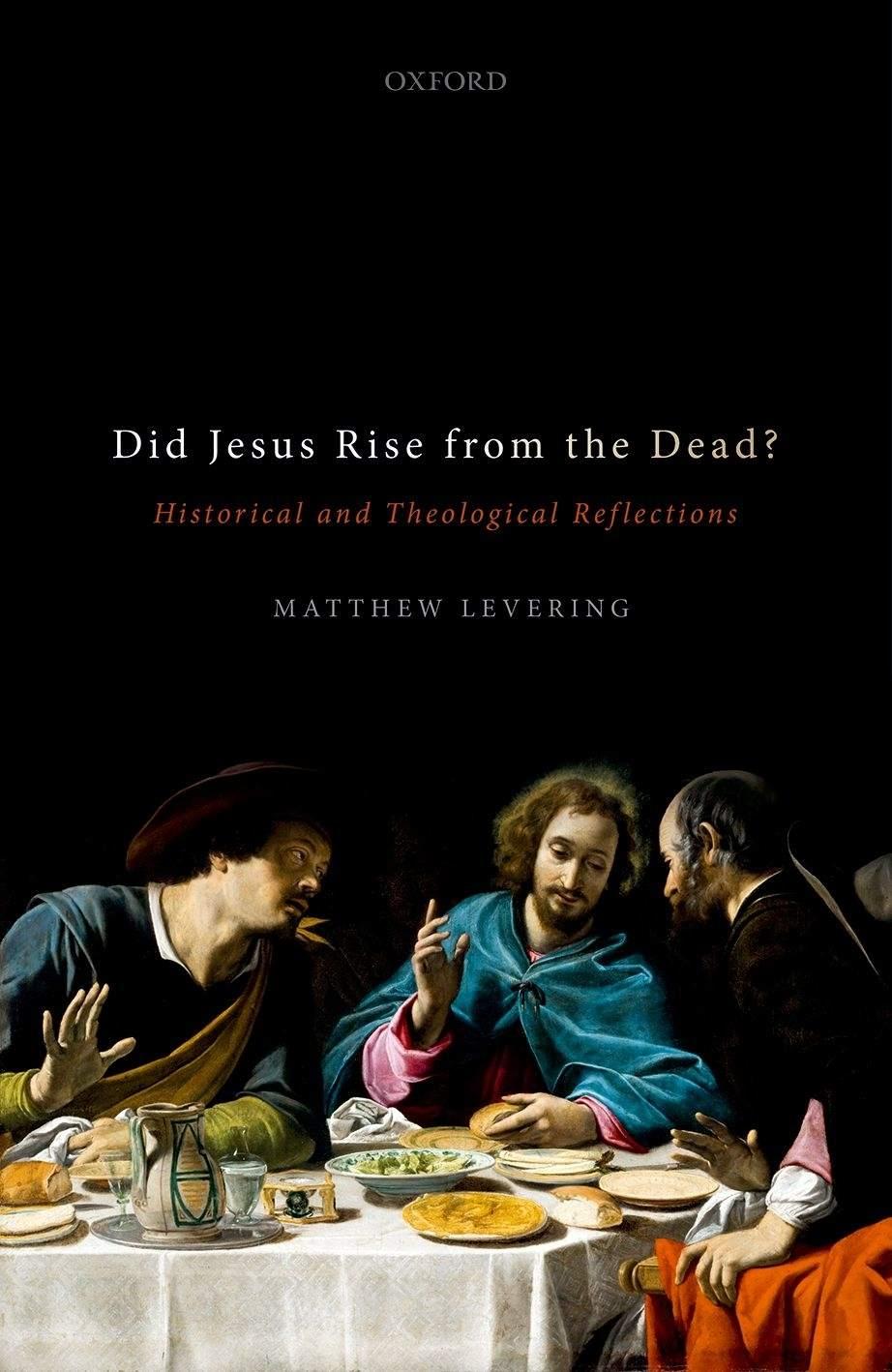Introduction
AccordingtoarecentRasmussenpoll,75percentofAmericansbelievethat Jesusrosefromthedead.¹Whilethisresultstrikesmeashigh,sinceinother surveys18percentofAmericansreportthemselvestobeatheists,itisclear thatatthepresentmomentmorethanhalfofAmericansbelieveinJesus’ Resurrection.Icontendthattheyhavegoodreasontodoso,andIhavewritten thisbookinordertomakethecase.
ThetheologianHansUrsvonBalthasar findsthatJesus’“Resurrectioncasts thedecisivelightonallthatprecededit.”²ButdidJesus’ Resurrectionreally happen,asarealeventthattookplaceinhumanhistorywhenthecrucified corpseofJesusofNazareth,sometimearound 30rosetogloriouslife?In thisbook,Iidentifywhatisessentiallyathreefoldbasisforconcludingthat Jesusrosefromthedead.Thisthreefoldbasisdoesnotoffera proof ofJesus’ Resurrection,butitdoesdemonstratethatitisreasonabletothinkthatJesus’ Resurrectionhappened,evenif havingruledoutboth “excessiveskepticism andfacilecredulity”—full-fledgedfaithintherisenJesusalsorequireswhat thetheologianThomasJosephWhitecalls “amomentofabandonment” in whichwefreelycommitourselvestotheGodwhorevealshimself.³
¹Seehttp://www.rasmussenreports.com/public_content/lifestyle/general_lifestyle/march_2016/ three_quarters_of_americans_believe_jesus_rose_from_the_dead.W.WaiteWillis,Jr.reports thata1994Harrispollfoundthat87percentofAmericansbelievedintheResurrectionof Jesus:seeWillis, “ATheologyofResurrection:ItsMeaningforJesus,Us,andGod,” in Resurrection:TheOriginandFutureofaBiblicalDoctrine,ed.JamesH.Charlesworthetal. (NewYork:T.&T.ClarkInternational,2006),187–217,at187.
²HansUrsvonBalthasar, LightoftheWord:BriefReflectionsontheSundayReadings,trans. DennisD.Martin(SanFrancisco:IgnatiusPress,1993),72.C.F.Evansopenshis Resurrection andtheNewTestament (London:SCMPress,1970)withasimilarpoint: “Toagreaterextent thanitisanythingelse,Christianity atleasttheChristianityoftheNewTestament isa religionofresurrection” (1).”
³ThomasJosephWhite,OP, TheLightofChrist:AnIntroductiontoCatholicism (Washington,DC:CatholicUniversityofAmericaPress,2017),5;cf.173.Itmayseemthat,as abelievingtheologian,theonlyquestionthatIcanorshouldaskis “Why didJesusrisefromthe dead?” ratherthan “DidJesusrisefromthedead?” Inmyview,neitherabelievingscholarnoran unbelievingscholarcanreallybrackethisorherfaithorlackthereof;butfaithdoesnotmean beingunreasonablyclosedtoevaluationsofthesufficiencyorinsufficiencyofhistoricalevidence.
ThethreefoldbasisforthecredibilityofJesus’ Resurrectionisasfollows. First,argumentationbasedupontheNewTestamentevidenceaboutJesus’ Resurrectionsuggeststhatthebestwayofaccountingforthisevidenceisto holdthatJesus’ Resurrectionhappened.Thisevidenceincludestheshiftofhis Jewishdisciplesfromaone-stageeschatologytoatwo-stageeschatology,the radicalreconfigurationoftheirexpectationsfortheMessiah,andthecontents oftheResurrectionnarrativesthemselves.⁴ Theevidencealsoincludeswhat vonBalthasarcallsthedisciples’ suddenacquisitionof “theirspiritualwealth andtheirunifiedviewofthings,” aswellasthefactthatJesus’ Ascensionbefits hismissionratherthanbeingmerelyawayofpaperingoverhisabsence.⁵ Lastly,theevidenceincludestheactivepresenceofeyewitnessestoJesus duringthetimeofthewritingoftheGospels,enablingtheGospelstomediate toustheapostolicremembranceofJesus.Themostplausiblealternativeway ofaccountingfortheevidenceistosupposethatthe firstdiscipleswerefooled byhallucinatoryvisions.Suchvisions,however,aretoocommonplacein humanlifetobelikelytohavecausedtheproclamationthatacrucified Messiahhadbeen “resurrected” toglorifiedlife.Evenhadtheybeendeluded byvisions,Jesus’ disciplescouldstilleasilyhaveavoidedtheclaimofbodily resurrection,withitsentailmentofaradicaleschatologicalshift.
Second,thesheerstrangenessoftheapostles’ claimthatacrucifiedman rosebodilyfromthedeadtoaglorifiedbodilyexistencetellsinfavorofthe credibilityoftheirclaim.Theydidnotchoosetodescribehispostmortem presencealongculturallyacceptedlinessuchasaheavenlyspirit-journeyor theexaltation(ortranslation/apotheosis)ofamartyr-hero.⁶ Theycouldhave
Bycontrast,in TheResurrectionofJesus:ANewHistoriographicalApproach (DownersGrove,IL: IVPAcademic,2010),MichaelR.LiconastrivestobrackethisfaithinJesus’ Resurrectionaspart ofhisresearchintothehistoricityofJesus’ Resurrection.
⁴ JohnBartonquestionswhethersuchaneschatologicalworldviewcanbeplausiblefor modernChristians.Heobserves, “Wherethereisnolongerabeliefinaneventualrestoration ofallcreation(apokatastasis),Jesus’ resurrectionlackstheintelligibilityithadforsomeearly Christians” (Barton, “WhyDoestheResurrectionofChristMatter?,” in Resurrection:Essaysin HonourofLeslieHoulden,ed.StephenBartonandGrahamStanton[London:SPCK,1994], 108–15,at111).IthinkthatpersonswhodonotyetsharethefullChristianworldviewcan nonethelessconcludeonreasonablegroundsthatJesusrosefromthedead.Idonotseewhy peoplewhobelieve,quitereasonably,intheCreatorGodwould findunintelligible “beliefinan eventualrestorationofallcreation.”
⁵ HansUrsvonBalthasar, NewElucidations,trans.MaryTheresildeSkerry(SanFrancisco: IgnatiusPress,1986),15.
⁶ Fortheseculturallyacceptedlinesinpaganism,seeRichardC.Miller, Resurrectionand ReceptioninEarlyChristianity (NewYork:Routledge,2015).Millerpointsoutthattheearly Christiansknewofmanypaganascensions/exaltations:forexample,thoseofHermes,Asclepius, Dionysus,Heracles,Perseus,Bellerophon,immortalizedemperors,andsoon.Tothese,although Miller’sbookfocusesonpaganexamples,numerousJewishascension/exaltationstoriescouldbe added.InMiller’sview,theGospelaccountsofJesus’ ResurrectionandAscensionsimplyreflect “thestockthemesoftheclassical ‘demigod’ traditionofMediterraneanculture,” butsecondcenturyChristianssoughttomakehimthe sole suchdemigod.CentraltoMiller’sargumentis
madethingsmucheasieronthemselveshadtheynotinsistedthatthecrucified Jesuswasburiedandthenrosefromthedead,therebyinauguratingthe eschatonastheMessiah,butwithoutanyvisiblerenewalofthecosmic order.⁷ Similarly,theapostlesinsistedthatChristiansmustfollowthepath oftheCrossinordertobeunitedwiththerisenandascendedLord.Although theycouldhaveadoptedamuchlesscostlypath,theydidnotinventaneasier wayoflifewhileawaitingthereturnofChrist.
Third,thesupremelovefoundinJesus’ teachingsandinhisinnocentdeath accordswithwhatwewouldexpectfromtheOldTestamentrevelationofthe freeandpersonalCreatorGodwhomakescovenantwithIsraelandwhose “steadfastlove” ensuresthat “inhisloveandinhispityheredeemed” his people(Is63:7,9).⁸ ItmakessensenotonlythatGodexists,butalsothathe wouldrevealhimselfpersonallytohisrationalcreatures.⁹ Godrevealshimself inJesusassupremelove,answeringtotheyearningnotonlyoftheIsraelites, butalsoofpaganssuchasSocrateswhodesiredtoenterintothedivine “sanctuaryofLove.”¹⁰ InstructedbyGod,theIsraelitesrecognizedthatthis entrancewouldrequiretheforgivenessofsins.Whenwecontemplatethe wholeofJesus’ wordsanddeeds,andthewholeoftheNewTestament’ s testimonyinrelationtotheScripturesofIsrael,thiscontemplationreveals
thatviewthatsyncretistic “HellenisticJudaism” wasthestartingpointforthetextsoftheNew Testament,includingforthesetexts’“themesofHellenistic exaltatio” (ibid.,12).Thus,Miller arguesthattheResurrection/AscensionnarrativesofJesusaremerely “translationfables” or instancesofthe “broaderMediterraneanherofabulationandtheRomanapotheosistraditionsof theperiod” (ibid.,14).ForreflectiononthetextstreatedbyMiller,seeN.T.Wright, The ResurrectionoftheSonofGod (Minneapolis,MN:FortressPress,2003),32–84.SeealsoAdela YarbroCollins, “TheEmptyTombintheGospelAccordingtoMark,” in HermesandAthena: BiblicalExegesisandPhilosophicalTheology,ed.EleonoreStumpandThomasP.Flint(Notre Dame:UniversityofNotreDamePress,1993),107–40;Collins, “TheWorshipofJesusandthe ImperialCult,” in TheJewishRootsofChristologicalMonotheism,ed.CareyC.Newman,James R.Davila,andGladysS.Lewis(Leiden:Brill,1999),234–57;StephenJ.Patterson, TheGodof Jesus:TheHistoricalJesusandtheSearchforMeaning (Harrisburg,PA:TrinityPress International,1998);andStanleyE.Porter, “Resurrection,theGreeksandtheNew Testament,” in Resurrection,ed.StanleyE.Porter,MichaelA.Hayes,andDavidTombs (Sheffield:SheffieldAcademicPress,1999),52–81.
⁷ MarkusVinzentarguesthatpriortoMarcioninthesecondcentury,Jesus’ Resurrection wasabsentfrom “Christianconsciousnessandbelief” (Vinzent, Christ’sResurrectioninEarly ChristianityandtheMakingoftheNewTestament [Burlington,VT:Ashgate,2011],182), because “[t]hePaulineheritageofbeliefintheResurrectionofChristhadfadedovertime” (ibid.,77)andbecausetheGospelsofMatthew,Mark,andJohnwerewrittenunderGnostic auspicesinRomeshortlyafterMarcion’sdeath(ibid.,92).Vinzent’sargumentis,however, eccentrictotheextreme.
⁸ MauriceWileshaspointedoutthat “themoreisolatedaphenomenonit[Jesus’ Resurrection]isunderstoodtobe,themoredifficulttheprocessofestablishingitstruthbecomes” (Wiles, “ANakedPillarofRock,” in Resurrection:EssaysinHonourofLeslieHoulden,116–27,at121).
⁹ SeeThomasF.Torrance, Space,TimeandResurrection (Edinburgh:T.&T.Clark,1998),1.
¹⁰ Plato, Symposium,211c–212b,trans.MichaelJoyce,inPlato, TheCollectedDialogues,ed. EdithHamiltonandHuntingtonCairns(Princeton:PrincetonUniversityPress,1961),527–74, at562–63.
tousaprofoundlyunifiedform.AlthoughJesus’ modeofenactingGod’ s promisescameasasurprise,¹¹hadJesus’ whole figurenotdisplayedsupreme loveandwisdominfulfillingGod’spromisestoIsrael,hisResurrectionto glorifiedbodilylifewouldsimplynothavebeencredible.Atbest,hisbodily returncouldonlyhavebeenreceivedasanintensificationoftheraisingof Jairus’sdaughter(Mk5:22–42)orofLazarus(Jn11),whoreturnedtofurther mundaneandmortallife,andwhosebeingraiseddidnotinauguratethe eschaton.
Thisbookdevelopsthesethreeinterrelatedsetsofargumentsforthe historicalrealityofJesus’ Resurrection.Iseektodrawtogetherhistoricaland theologicalreasonsforbelievingthatJesus’ Resurrectionhappened.¹²The first fourchaptersaremorehistoricallyoriented,whilethelastthreearemore theologicallyfocused;buttheologyandhistoryarepresentthroughout.Historically,Iamcommittedtoviewthatwhendealingwiththeclaimthata miraculouseventoccurred,historiansshouldfollow “themethodofhypothesisandverificationwiththeaimofgettinginthedata(inthehistorian’ scase thesourcematerialofwhateverkind),doingsowithappropriatesimplicityor elegance,andsheddinglightonotherareas.”¹³Iftheresultisthatthedataare bestaccountedforbyJesusrisingfromthedeadtoglorifiedlife,thenhistorianscansaythis withouttherebymakingatheologicaldeterminationabout whethersuchamiracleispossibleor fitting.¹⁴
ThetheologianGuyMansinicommentsthat “theGodwhocreatesreason doesnotaskustosinagainstthiscreatedgoodwhenheinvitesustofaithin revelation.”¹⁵ Ifso,thentherisenJesuswantsustobeabletoknowthatitis historicallyreasonabletobelievethatherosefromthedead,andalsotoknow thefulltruthofhisResurrection.Toknowthelatter andindeedalsotohave
¹¹Evenwhileemphasizingfulfillment,therefore,Iaffirmthatthisisaradicallysurprisingand surpassingfulfillment.Onthispoint,seeFlemingRutledge, TheCrucifixion:Understandingthe DeathofJesusChrist (GrandRapids,MI:Eerdmans,2015),20–1.
¹²SeealsoJean-PierreTorrell,OP, RésurrectiondeJésusetresurrectiondesmorts.Foi,histoire etthéologie (Paris:Cerf,2012).
¹³N.T.Wright, “ChristandtheCosmos:KingdomandCreationinGospelPerspective,” in ChristandtheCreatedOrder:PerspectivesfromTheology,Philosophy,andScience,vol.2,ed.Andrew B.TorranceandThomasH.McCall(GrandRapids,MI:Zondervan,2018),97–109,at107.
¹
⁴ RichardSwinburneremarks, “ItissimplynotpossibletoinvestigatewhetherJesusrose fromthedeadwithouttakingaviewabouthowprobableitisthatthereisaGodlikelyto interveneinhumanhistoryinthiskindofway” (Swinburne, TheResurrectionofGodIncarnate [Oxford:OxfordUniversityPress,2003],202–3).Iagree,butmypointisthatthehistorian qua historian neednot(andindeedcannot)takeaviewontheprobabilityofwhetherthereisa God.MetaphysicsandtheologyarerequiredforknowledgeofGod,becauseGodisnotan empiricallydetectablerealitybutratheristhetranscendent(andperfectlyimmanent)infinite sourceofall finiterealities.SeealsoWolfhartPannenberg, “HistoryandtheRealityofthe Resurrection, ” in ResurrectionReconsidered,ed.GavinD’Costa,62–72,at62.
¹
⁵ GuyMansini,OSB, FundamentalTheology (Washington,DC:CatholicUniversityof AmericaPress,2018),3.
thebestinsightintotheformer requirespayingattentiontothewitnessof theOldTestamentandallowingittoteachusaboutGodandhisplan.To knowthefulltruthofJesusrisen,wealsoneedtoexperiencehispresencein thecelebrationoftheEucharistandtoexperiencethefruitfulnessofhisselfsacrificialpath,inunionwiththerisenandascendedChristandwithhisholy peopletheChurch.
PARTICIPATORYKNOWLEDGEAND THELIMITSOFHISTORIOGRAPHY
Withrespecttowhatmightbecalledthe “participatory” pathsforknowingthe fulltruthofJesus’ Resurrection,thebiblicalscholarLukeTimothyJohnson hasremarkedthat “Jesusismostfullyandconsistentlylearnedwithinthe contextofthebelievingcommunityofthechurch,becausetherisenLord identifieshimselfwiththiscommunity” andbecauseinthiscommunity “Jesus isknownandloved ...asa personalpresenceandsustainingpower.”¹⁶ Atthe outsetofthisbook,letmeregistermyagreementwithJohnson.HistoricalcriticalscholarshipcannotsufficebyitselfforknowingthatJesusrosefromthe dead,especiallywhenJesus’ ResurrectionisproperlyunderstoodastheResurrectionoftheincarnateSonofGod.Whilethesurfacelayersofhistorycan beprobedbyhistoricalinquiry,¹⁷ otherdeeperlayersinvolvetheintimacyand
¹⁶ LukeTimothyJohnson, LivingJesus:LearningtheHeartoftheGospel (NewYork: HarperCollins,1999),23.Inthewordsofanotherbiblicalscholar,StefanAlkier, “[t]heinvestigationofhistorico-empiricalreality,” whilenecessaryandvaluablesinceithastodowith “ an ineluctablerealmoftherealityweexperience,” isnottheonlypathforseekingtoknowwhether thedisciples’ testimonyistrue(StefanAlkier, TheRealityoftheResurrection:TheNewTestament Witness,trans.LeroyA.Huizenga[Waco,TX:BaylorUniversityPress,2013],2).Seealso MatthewJ.Ramage, Jesus,Interpreted:BenedictXVI,BartEhrman,andtheHistoricalTruthof theGospels (Washington,DC:CatholicUniversityofAmericaPress,2017),261;Adrian Thatcher, “ResurrectionandRationality,” in TheResurrectionofJesusChrist,ed.PaulAvis (London:Darton,Longman&Todd,1993),171–86,at180.ForbackgroundtoThatcher’ s argument,seeMichaelPolanyi, PersonalKnowledge,rev.ed.(Chicago:UniversityofChicago Press,1962).
¹⁷ Nohistoriographicalinquirycanbeunbiased:asJohnP.Meiersays, “Objectivityinthe questforthehistoricalJesusis,toborrowaphrasefromthetheologianKarlRahner,an ‘asymptomaticgoal.’ Itisagoalwehavetokeeppressingtoward,eventhoughweneverfully reachit....Concretely,itmeansknowingone’ssources,havingclearcriteriaformakinghistoricaljudgmentsaboutthem,learningfromotherquesterspastandpresent,andinvitingthe criticismofone’ speers ” (Meier, AMarginalJew:RethinkingtheHistoricalJesus,vol.1: TheRoots oftheProblemandthePerson [NewYork:Doubleday,1991],4–5).Theproblemisthatevenin fixingthese “clearcriteria” withregardtothe figureofJesus(accessible,asMeieremphasizes, onlythroughtheologicallyandtypologicallyinflectedtexts),onealreadyhastomaketheological judgments.Meiergrantsthat “[t]hereisnoneutralSwitzerlandofthemindintheworldofJesus research” (ibid.,5).ForMeier, “adheringtocertaincommonlyheldcriteria” isthekeysolution, andhethereforearguesthatheisinfactabletomake “astrictdistinctionbetweenwhatIknow
communionthatexistbetweenpersonsandalsobetweentheCreatorGodand persons theinnermostpersonalandontologicaldimensionofhistory.¹⁸ It followsthatJesus’ Resurrection,whileopentohistorical-criticalinquiry, requiresadditionalkindsofreasoningthatanswermorefullytothedimensionsoflivedhumanhistory.
Withregardtohistorical-criticalinquiry,wemustalsokeepinmindthat,as thebiblicalscholarJohnMeiersays, “allhistoricalknowledgeabouthuman personsislimitedbytheverynatureofthecase” and,bycomparisonwith morerecenthistory, “[a]ncienthistoryismuchlessquantifiable,muchmore dependentoninferencebasedonsuchroughrulesofthumbasthebest explanationavailable,themoreormostprobableexplanation,particular criteriaforjudginghistoricity,andanalogy.”¹⁹ Meier’spointisthateven whenthereisagooddealofnearlycontemporaneouswritingaboutanancient historical figure asthereisaboutJesus theabilityofhistorianstoarriveat conclusionsthatgobeyondtentativeprobabilityisquitelimited.
DoesitthereforefollowthatweshouldbracketthequestionofthehistoricityofJesus’ Resurrection?HereInotedthatanothereminentbiblicalscholar, WalterMoberly,hasrecentlywarnedagainststartingdiscussionsoftheBible with “questionsofhistoricalreliability.”²⁰ Moberlyremarksthataccordingto theNewTestament,therisenJesusdidnotshowhimselftohisopponents andsay “Itoldyouso.” Rather,Jesusconsistentlyexercisesa “noncoercive” authority,anauthorityrootedinthehumilityofinterpersonalloveand wisdom.²¹Bymanifestinghisrisenbodyonlytoachosencircleofpeople (evenifthiscircleincludedafewhundred,asPaulsuggests),therisenJesus
aboutJesusbyresearchandreasonandwhatIholdbyfaith” (ibid.,6).Iacceptthatsucha distinctioncanbemade,butnotasstrictlyasMeiersupposes.Whatisincludedinthe “criteria” thatdefinewhatcountsas “ reason ” willinvolvetheologicalchoices.InMeier’smulti-volume project, “atreatmentoftheresurrectionisomittednotbecauseitisdeniedbutsimplybecause therestrictivedefinitionofthehistoricalJesusIwillbeusingdoesnotallowustoproceedinto mattersthatcanbeaffirmedonlybyfaith” (ibid.,13).
¹⁸ ThispointexplainstheroleoftypologicalreasoningintheGospels.Seemostrecently RichardB.Hays, ReadingBackwards:FiguralChristologyandtheFourfoldGospelWitness (Waco,TX:BaylorUniversityPress,2014);Hays, EchoesofScriptureintheGospels (Waco, TX:BaylorUniversityPress,2016).Onthe “outside” and “inside” ofhistoricalevents,see J.I.H.McDonald, TheResurrection:NarrativeandBelief (London:SPCK,1989),137.
¹⁹ Meier, AMarginalJew:RethinkingtheHistoricalJesus,vol.1: TheRootsoftheProblemand thePerson,23–4.Meieradds, “Wecannotknowthe ‘real’ Jesusthroughhistoricalresearch, whetherwemeanhistotalrealityorjustareasonablycompletebiographicalportrait.Wecan, however,knowthe ‘historicalJesus.’ ...Havingabandonedthenaïvehopeofknowingthe ‘real’ Jesusbymeansofhistoricalcriticism,whatdowemeanwhenwesaythatwearepursuingthe ‘historicalJesus’ orthe ‘Jesusofhistory’?Inbrief,theJesusofhistoryisamodernabstractionand construct.BytheJesusofhistoryImeantheJesuswhomwecan ‘ recover ’ andexaminebyusing thescientifictoolsofmodernhistoricalresearch” (ibid.,24–5).
²⁰ R.W.L.Moberly, TheBibleinaDisenchantedAge:TheEnduringPossibilityofChristian Faith (GrandRapids,MI:BakerAcademic,2018),7.
²¹Ibid.,153.
ensuredthatthepathknowinghisrealitywillalwaysbethroughhiscommunityofapostles.Asaresult,Moberlysays, “Jesus’ resurrectionisarealitythatis likelytoberecognizableonlyby,andmakesenseonlyto,acertainkindof opennessandtrust.”²²MoberlycallsforanengagementwiththeBiblethat allowsforaparticipatoryknowledgeinwhichasignificantpartoftheBible’ s “plausibilitystructure” isfoundintherequirementof “personalresponsiveness ” toGod’sword.²³
IshareMoberly’sappreciationforparticipatoryknowledgeandhissensitivitytobiblicalgenres.²⁴ OncethegenresoftheResurrectionnarrativesarein viewandhistoricalreliabilityisnotequatedwiththenormsofmodern historiography,MoberlyandI(andJohnson)wouldalsoagreeinaffirming thereliabilityortruthoftheNewTestament’sproclamationthatJesushas risenfromthedead.Yet,thecaseofJesus’ Resurrectionrequiresthatquestions ofhistoricalreliabilitynotbesidelined,evenattheoutset.AlthoughIagree withMoberlythataparticipatorystancewillbemoreopentothetruthof Jesus’ Resurrection,²⁵ itisimportantalsotoinsistuponthereasonablenessof affirmingJesus’ Resurrectiononhistoricalgrounds.FaithinJesus’ Resurrectionisnotunreasonable.²⁶
RESPONDINGTOTROELTSCH
Allscholarscanagreethat “beliefintherisenJesusasLordandMessiah(Acts 2.36)markedtheeffectivebifurcation” ofJudaismandChristianity,²⁷ but manyscholars includingsomeChristianones concurwiththetheologian ErnstTroeltschthatChristiantruth-claimscannotbeevaluatedbyhistorians andthuscannotbeconsidered “historical.” In1898,Troeltschfamouslyargued thata “basicpostulateofthehistoricalmethod” isthat “[a]greementwith normal,customary,oratleastfrequentlyattestedhappeningsandconditions
²²Ibid.²³Ibid.,138–9.
²⁴ Seemy ParticipatoryBiblicalExegesis:ATheologyofBiblicalInterpretation (NotreDame: UniversityofNotreDamePress,2008).AmongthegenrespresentintheNewTestament’ s presentationoftherisenJesus,J.I.H.McDonaldidentifies “confessionalformula,sermon, dialogue,apocalypticvisionandnarrative” (McDonald, TheResurrection,136).McDonald comments, “Narrativeisnothistory,thoughitmaybehistoricallysignificant.Bothnarrative andhistoryareconcernedwithtruth” (ibid.,137).By “history,” McDonaldmeansmodern historiography.
²⁵ SeealsoMcDonald, TheResurrection,1.
²⁶ Fortheoppositeassumption,seeMichaelL.Satlow, HowtheBibleBecameHoly (New Haven,CT:YaleUniversityPress,2014),210–14.ForSatlow,theideathatJesusrosefromthe deadorthatinJesusGodwasrevealinghimselfissomethingthatcannotbetakenseriouslyby reasonablepeople;Jesus’ Resurrectiondoesnotevenmeritamention(proorcontra)inhis descriptionofChristianorigins.
²⁷ McDonald, TheResurrection,137.
aswehaveexperiencedthemisthecriterionofprobabilityforalleventsthat historicalcriticismcanrecognizeashavingactuallyorpossiblyhappened.”²⁸ Thispositionentailsthatthehistorian,quahistorian,mustruleouteventhe possibilityofJesus’ Resurrection.Formanyhistorians,themomenttheevidencemustbeexplainedbydivineactionisthemomentthat “history” is replacedby “faith.”
Letmeofferarecentexampleofthisview.ThebiblicalscholarDaleMartin rightlycautionsthat “sayingtheresurrectionofJesusis ‘historical’ isnot sayingmerelythatit ‘occurredinthepast.’ Itisclaimingthatmodern historians,usingthecommonlyacknowledgedtoolsandcriteriaofmodern historiography,candemonstratethattheresurrectionofJesus ...shouldbe acceptedas ‘historical’ byotherprofessionalhistorians.”²⁹ ButforMartin,as forTroeltsch,ifatanytimethehistoricalevidencepointstodivineaction “ we havemovedoutofhistoryandintofaith.”³⁰ Furthermore,forMartin,asfora numberofhistorical-criticalexegetes,theResurrectionnarrativesaresosketchy andcontradictoryamongthemselves andPaul’switnessin1Corinthians15to thecharacteristicsofarisenbodyissoodd thatnomodernhistoriancanor shouldtakethesetextsseriouslyasevidence.
Inresponse,IgrantthattheNewTestamentnarrativesofJesus’ Resurrectionarenotwhatwewouldpossesshadtheybeenwrittenbymodern historians,whowouldhave filledinmanymoreexternaldetails,removed theologicalelaborationsandadditions,andinterviewedmanymorewitnesses.³¹ Second,however,weshouldaffirmthatsincethatitis Jesus’ Resurrection whosehistoricityisatissue,thefactthatHellenistic(mainlyJewish)Christians wrotetheNewTestamentnarrativesismuchtoouradvantage.Afterall, theGospelsdepicttheeventinamannerthatensuresthatreaderswillperceive
²⁸ ErnstTroeltsch, “HistoricalandDogmaticMethodinTheology,” inTroeltsch, Religionin History,trans.JamesLutherAdamsandWalterF.Bense(Edinburgh:T.&T.Clark,1991), 11–32,at13–14.
²
⁹ DaleB.Martin, BiblicalTruths:TheMeaningofScriptureintheTwenty-FirstCentury (NewHaven,CT:YaleUniversityPress,2017),204.
³⁰ Ibid.,212.Martinexaggerateswhenhestates: “AccordingtoMark,noonesawthe resurrectedJesusanywhere,thoughwemaytakefromtheyoungman’sinstructionsthatJesus intended toappeartothediscipleslaterinGalilee” (ibid.,207,assumingthatMark’sGospel originallyendedafter16:8).Mark’sGospelneversaysthat “noonesawtheresurrectedJesus anywhere,” andthisclaimshouldthereforenotbeattributed “toMark” asMartindoes.Martin goesontoclaim, “AccordingtoMark’snarrative,noappearancestookplaceatall” (ibid.),but Markneversaysanythingofthesort.ForMartin,the “contradictionsanddifferences” (ibid., 210)presentintheResurrectionnarrativesmeanthathistorianscannottakethesenarratives seriouslytoday,buthistoriansoftheancientworldrelyuponthetestimonyfoundinancient historiographicalandbiographicalgenres,andtherearewaystoassesscriticallysuchtestimony withoutthrowingupone’shandsatthe “contradictionsanddifferences. ” SeealsoJerome H.Neyrey,SJ, TheResurrectionStories (Wilmington,DE:MichaelGlazier,1988),98–9.
³¹SeeDaleC.Allison,Jr., “TheResurrectionofJesusandRationalApologetics,” Philosophia Christi 10(2008):315–35,at325–6.
itasthetranscendentmysterythatithadtohavebeen.³²TheNewTestament authorsalsorecognizeJesus’ Resurrectionas “the fulfillmentofJewishScripture, ” anaspectthat,asthebiblicalscholarBrantPitrepointsout, “isneglected inmanymodern-daybooksontheresurrection.”³³Jesus’ Resurrectiondoes notcomeoutoftheblue,butfulfillsnotonlyJesus’ ownhistorybutalsothe historyofGodwithhispeople.Godworkedthroughauthorsprimedto appreciateanddepictthisrelationshipinallitspropheticdepths.
Third,wecanadmitthattheeyewitnessestotherisenJesusdidnotobtain Lockeanclearanddistinctideasthatmadethe full realityofJesusrisen accessible.³⁴ Wereadthatamongthewitnessesthemselves, “somedoubted” theevidenceoftheireyes(Mt28:17).Asnotedabove,therisenJesusdidnot riseinordertoensurethat noone coulddoubtit.Thisisnottosay,asCelsus thought,thatthedisciplesexperiencedmere “imaginaryappearances” ora “wakingdream”—letalone,asCelsusalsoproposed,thatperhapsJesusdidnot diefromhiswoundsontheCross.³⁵ Instead,wearedealingwithasurfeitof
³²JosephRatzingerarguesthatthischaracteroftranscendentmysteryis “whyitissodifficult, indeedabsolutelyimpossible,fortheGospelstodescribetheencounterwiththerisenChrist” and “whytheycanonlystammerwhentheyspeakofthesemeetingsandseemtoprovide contradictorydescriptionsofthem.Inrealitytheyaresurprisinglyunanimousinthedialecticof theirstatements,inthesimultaneityoftouchingandnottouching,orrecognizingandnot recognizing,ofcompleteidentitybetweenthecrucifiedandtherisenChristandcomplete transformation.PeoplerecognizetheLordandyetdonotrecognizehimagain;peopletouch him,andyetheisuntouchable;heisthesameandyetquitedifferent” (Introductionto Christianity,trans.J.R.Foster[SanFrancisco:IgnatiusPress,2004],308).
³³BrantPitre, TheCaseforJesus:TheBiblicalandHistoricalEvidenceforChrist (NewYork: RandomHouse,2016),184.
³⁴ ForLocke’saccountofclearanddistinctideas,seeJohnLocke, AnEssayconcerning HumanUnderstanding,ed.PeterH.Nidditch(Oxford:OxfordUniversityPress,1975),Book II.InBookIV,Locketakesupthetopicoffaithandreason,andargues toostrongly,andina mannerthatshapeslaterChristianapologetics(seeChapter5ofthepresentbook) boththatit “belongsto Reason,tojudgeoftheTruthofitsbeingaRevelation” (“whetheritbeadivine Revelationorno, Reason mustjudge”)andfurthermorethat “[t]herecanbenoevidence,that anytraditionalRevelationisofdivineOriginal,intheWordswereceiveit,andintheSensewe understandit,soclear,andsocertain,asthatofthePrinciplesofReason:Andtherefore, Nothing thatiscontraryto,andinconsistentwiththeclearandself-evidentDictatesofReason,hasaRight tobeurged,orassentedto,asaMatterofFaith,whereinReasonhathnothingtodo” (ibid., BookIV,ch.18,§§8,10,pp.694–6).
³⁵ Origen, AgainstCelsus,II.60–1,trans.FrederickCrombieandW.H.Cairns,in Fathersof theThirdCentury:Tertullian,PartFourth;MinuciusFelix;Commodian;Origen,PartsFirstand Second,ed.A.ClevelandCoxe(Peabody,MA:Hendrickson,1995),395–669,at455–6.For furtherexamplesoftheviewthatJesusdidnotactuallydieontheCross,seeAlbertSchweitzer, TheQuestoftheHistoricalJesus,trans.W.Montgomery(NewYork:Macmillan,1961),38–47,as wellasthefascinatingstudybyGeraldO’Collins,SJandDanielKendall,SJ, “OnReissuing Venturini,” Gregorianum 75(1994):241–65.InfluencedbyPlatonismandalsobythefactthat Jesus’ bodyroseglorified,Origenhimselfholdsthat “afterHisresurrection,Heexistedinabody intermediate,asitwere,betweenthegrossnessofthatwhichHehadbeforeHissufferings,and theappearanceofasouluncoveredbysuchabody” (ibid.,II.62,456).Seealsothehistorical fictionofPhilipPullman, TheGoodManJesusandtheScoundrelChrist (Edinburgh:Canongate, 2010),whichinventsatwinforJesuswho,afterJesus’ death,pretendstobetherisenJesus.
reality,asbefitsaglorifiedbody.Jesusisraisedbodilyfromdeath,butheis raisedtoaglorifiedmodeofbodilyexistence,inwhichheisnolongersubject totheearthlylimitationsthatconstrainthehumanbodyinthepresentlife. ConfrontedwiththerealityofhisResurrection,thedisciplesexperiencedthe awed “fear” (Mt28:8)and “tremblingandastonishment” (Mk16:8)that characterizetherevelationofatranscendentreality,whosescopeexceedsthe boundsofreason’spowers.³⁶ Inmanifestinghimselfasrisen,Jesussought primarilytoallowforparticipationinhisResurrectionasamysteryofhis Lordship.
Fourthandcorrespondingly,wemustinsistthathistoricalevidencecannot taketheplaceoftheapostles’ (andthewholeChurch’s)witnesstothe LordshipofChrist.ThroughfaithintherisenandascendedJesus,weenter intorealcommunionwithhim:ourlivesaretransformedand,intheSpirit,we become “God’stemple” (1Cor3:16)andthe “bodyofChrist” (1Cor12:27).³⁷ AsthetheologianDonaldMacKinnonsuggests,wearedealingwithadivine mysterythat “touch[es]whatisultimate,whichisatoncewithinandyet whollybeyondourcomprehension.”³⁸ Becauseitis within ourcomprehension,Jesus’ Resurrectionhasevidencecapableofarticulationanddefense;but becauseitis beyond ourcomprehension,toknowitfullyandproperlyrequires theactionofChristJesusandtheSpirit.³⁹ ThetheologianBrianRobinette expressestheessentialmysteryofJesus’ Resurrection: “Whatwasfamiliar becamestrange,”⁴⁰ orperhapsmoreaccurately,becameevenstranger,given
³⁶ AgainsttheviewthatMark16:1–8impliesnotbodilyResurrectionbutrathermerelyJesus’ exaltationorapotheosisorhisnewstatusasaherowhosegraveshouldbevenerated,seePeter G.Bolt, “Mk16:1–8:TheEmptyTombofaHero?” TyndaleBulletin 47(1996):27–37, respondingto(amongothers)AdelaYarbroCollins, “ApotheosisandResurrection,” in The NewTestamentandHellenisticJudaism,ed.P.BorgenandS.Giversen(Aarhus,Denmark: AarhusUniversityPress,1995),88–100.Boltsumsupthepointinhis Jesus’ DefeatofDeath: PersuadingMark’sEarlyReaders (Cambridge:CambridgeUniversityPress,2003),266.Gerald O’Collins,SJlikewiserespondstoAdelaYarbroCollinsandothersinhis SaintAugustineonthe ResurrectionofChrist:Teaching,Rhetoric,Reception (Oxford:OxfordUniversityPress,2017), 90–3,108–9.
³
⁷ Forfurtherdiscussion,seeMcDonald, TheResurrection,33–5.Seealsomy Retrievingthe ChristianVirtueofTemperance:Aquinas’sEschatologicalEthics (NotreDame:Universityof NotreDamePress,forthcoming).
³
⁸ D.M.MacKinnon, “GoodFridayandEaster:AnInterpretation,” in TheResurrection: ADialoguebyG.W.H.LampeandD.M.MacKinnon,ed.WilliamPurcell(Philadelphia: WestminsterPress,1966),73–85,at85.
³
⁹ Putanotherway,the praeambula fidei arenotpreconditionsoffaith,butrathertheyare handmaidsofthefaith.ThewitnessoftheChurchincludes praeambula (suchastheevidencefor God’sexistenceandJesus’ Resurrection)butdoesnotbeginwith praeambula
⁴⁰ BrianD.Robinette, GrammarsofResurrection:AChristianTheologyofPresenceand Absence (NewYork:Crossroad,2009),334;seealso341–2.AgainsttheviewthatJesus’“ resurrectiondidtakeplace,butitdidnottakeplaceinempiricalspaceandtime” becauseitwasan eventthatradicallytranscendedthelimitsofhistory,seeFrancisSchüsslerFiorenza, “The ResurrectionofJesusandRomanCatholicFundamentalTheology,” in TheResurrection:An InterdisciplinarySymposiumontheResurrectionofJesus,ed.StephenT.Davis,DanielKendall,
thatJesuswasalreadygreatlysurprisingandoftenshockingtothosewho encounteredhimduringhislifetime.
Fifth,thereisnonethelessnoneedtograntthatthe “historical” islimitedin thewaythatTroeltschconceives.Historianscandotheirworkwithout makinganapriorijudgmentabouttheactivepresenceoftheCreatorGod intheworld.Usingthenormalcriticalmethodsofassessingempiricalevidencefromtheancientworld,historianscanarriveatprobabilitiesaboutwhat happenedinthepast,withoutneedingtoruleoutthatamiraculouseventmay haveoccurred.HistoriansarenotcompetenttojudgewhetherGodhasacted inhistory,butneitheraretheycompetenttoruleoutthepossibilityofsuch actioninevaluatingtheevidencethatcomestothem.Thehistoricaltaskisto assesstheevidenceandtoaccountforitinthesimplestandmostcomprehensivemanner.
THEPLANOFTHEWORK
Withthisbackgroundinview,letmebrieflysurveythesevenchaptersofthis book,whichmovefrommorehistorical(thoughstilltheological)tomore theological(thoughstillhistorical).The firstchapteraddressestheissuesthat arisewhentheGospelsareanalyzedfromahistorical-criticalperspective. IexploretheconclusionsofthreeinterpretersofJesus’ Resurrection:Edward Schillebeeckx,DaleAllison,andN.T.Wright.Allthreeofthesescholars professbeliefthatJesustrulyrosefromthedead.AllisonandWright,however, sharplycriticizeSchillebeeckx’sposition,andtheyalsodiffersharplyfrom eachother.Allisonsuggeststhathistoriansdonothavewarranttoholdthat Jesus’ actualResurrectionisthebestpossiblehistoricalexplanationofthe first Christians’ proclamation.Bycontrast,Wrightarguesthathistoricallyspeaking,onlytheconcrete,bodilymanifestationoftherisenJesuscanadequately accountfortheshiftsineschatologicalworldviewthatmarkthe firstChristiansaftertheignominiouscrucifixionofJesus.Withoutdenyingthepowerof Allison’sconcerns,I findWright’sargumentstobeconvincing.
SJ,andGeraldO’Collins,SJ(Oxford:OxfordUniversityPress,1997),213–48,at246.Forcritical discussionoftheviewsoftheearlyKarlBarthandofRudolfBultmanninthisregard,seePeter Carnley, TheStructureofResurrectionBelief (Oxford:OxfordUniversityPress,1987),96–147. ForamorerecentexampleoftheperspectivethatFiorenzaandCarnleyrightlycontest,see S.H.Hooke, TheResurrectionofChrist:AsHistoryandExperience (London:Darton,Longman &Todd,1967).VanA.HarveyarguesthatBarth’spositioninthe ChurchDogmatics endsup beingrathercontradictory:seeHarvey, TheHistorianandtheBeliever (NewYork:Macmillan, 1969),159.ThedefinitivestudyoftheplaceoftheResurrectionofJesuswithinthewholeof Barth’stheology,overthecourseofitsdevelopment,isR.DaleDawson, TheResurrectioninKarl Barth (Aldershot:Ashgate,2007).SeealsoBernardPrusak, “BodilyResurrectioninCatholic Perspectives,” TheologicalStudies 61(2000):64–105.
DidJesusRisefromtheDead?
Thesecondchapterhastodowithhistoricalremembrance.IfJesusrose fromthedead,howcanweknowthatthisisindeedso?Howistheknowledge ofJesus’ Resurrectionmediatedthroughthecenturies?IarguethatGod providestwomodes.First,indebtedtotheworkofthebiblicalscholarRichard Bauckham whichIsummarize InotethattheGospelscontainthetestimonyofeyewitnessestotheeventstheyreport.Thisisessentiallyacommonsenseargument,giventhattheregionofJerusalemandGalileewasasmall region,andmanypeoplewhosawJesus(orwhoknewpeoplewhoknewhim) weretellingtheirstoriesandassessingthestoriesofothersduringthetimein whichPaulandtheevangelistswereactive.InadditiontotheGospels’ eyewitnesstestimony,Godhasgivenusasecondmodeofknowingtherisen Jesus,namelythroughliturgicalremembrance.⁴¹TherisenJesuswantsusto knowhiminandthroughhisapostoliccommunity,theinauguratedkingdom ofGod,inwhichthegospelisproclaimedandtheEucharistcelebrated.
ThethirdchapterreturnstotheworkofthebiblicalscholarsAllisonand Wright,thistimeinlightofthequestionofwhattheOldTestament Scripturescanofferwithrespecttoeva luatingthehistoricalplausibilityof theResurrectionofJesus.WrightsetsforthingreatdetailtheOldTestament backgroundwithregardtoresurrection, andheoffersparticularinsightinto theSecondTempleperiod.HeshowsthatthepeopleofIsraelcametobelieve thattheirGodwouldrescuethemevenfromdeath.Thisisvaluablebackground,butweshouldalsolooktothebackgroundthatbeginswiththe revelationoftheCreatorGod(Genesis1)andthatcontinuesthroughthe Torah,propheticbooks,andwisdomliterature.Inthisway,wecanlearn fromIsrael ’ sunderstandingof “ history” inthelightoftheCreatorGodwho loveshispeople.InevaluatingthecredibilityofJesus’ Resurrection,we shouldaskifit fi tswiththeGodwhorevealshimselfandhisplanofsalvation inIsrael ’ sScriptures.Withthisgoalinview,IsurveytheOldTestament citationsthatThomasAquinasincludesinhiscommentaryonJesus ’ ResurrectionappearancesinJohn20 – 1. ⁴ ²CommentinguponJesus ’ Resurrection,
⁴¹HereIamidentifyingacentralelementofthedomainthatCatholics(andOrthodox)term “Tradition.” AveryDulles,SJcomments, “Traditionis ‘divine’ insofarasitisarousedand sustainedbyGod;itis ‘apostolic’ insofarasitoriginateswiththeapostles;itis ‘living’ insofar asitremainscontemporarywitheverygeneration”;andDullesadds, “Accesstotraditionis gainedprimarilythroughagrace-filledlifewithinthecommunityoffaith....[T]raditionis graspedthroughfamiliarityorparticipationasaresultofdwellingwithintheChurch,takingpart initsworship,andbehavingaccordingtoitsstandards” (Dulles, TheCraftofTheology:From SymboltoSystem,newexpandededition[NewYork:Crossroad,1996],103).Traditionisthe livedrealityofcommunionwithChristinhisSpirit-filledcommunity,andthereforeisboth “apostolic” and “living” intheChurch.
⁴²IemployAquinasinthisbookinamannersimilartohowGeraldO’Collinsengages Augustineinhis SaintAugustineontheResurrectionofChrist.O’Collinsshowsthatitishelpful tobringpre-historical-critical(andpost-biblical)voicesintothecontemporaryconversation aboutthecredibilityofJesus’ Resurrection.
AquinasprovidesawiderangeofOldTe stamentcitationsthat,whenviewed asanassemblage,instructusprofoundlyaboutthecontextinwhichJesus ’ Resurrectioniscredible.
MyfourthchapteraddressestheissueofthestrangenessofJesus’ Resurrection.NotonlyarethedescriptionsoftheResurrectionappearances filled withwhatseemtobeverystrangeencounters,butalsotheclaimthata crucifiedmanhasbeenraisedfromthedeadtoaglorifiedbodilyexistenceis utterlystrange.Christianwritershavelongrecognizedthestrangenessofthe claimthatJesuswasraisedfromthedead.Tolessenthisstrangeness,many authorshavesoughttospiritualizethisclaimbyvariousmeans.Having alreadydiscussedSchillebeeckx’sspiritualizingproposal(Chapter1),Iset forththeviewsofsomecontemporarybiblicalscholarsandtheologianswho advocate,invariousways,aspiritualizedaccountofJesus’ Resurrection. Iarguethatsucheffortstodecreasetheradicalstrangenessoftheclaim namelythatitwasreallythecrucifiedJesuswhoappearedinhispalpablyalive (tangiblebutglorified) flesh areamistake,sincetheNewTestamentinsists preciselyuponthestrangeness.
Fullyawareofwhatastrangeclaimtheyweremaking,Paulandtheother NewTestamentauthorsmadeitanyway,refusingtotaketheoptionof lesseningitsstrangenessinordertomakeitmoreplausible.Similarly,inhis Summatheologiae,ThomasAquinasappealstoJohnofDamascusforassistanceinretainingthestrangenessoftheclaim.Damascenelivedinaculture whereMuslimandGnosticspiritualizationsofJesus’ CrossandResurrection werecommonplace.Mypointisthatalthoughitmayseemthataspiritualized Resurrectionismoreplausible,⁴³infactitistheverystrangenessoftheclaim thatmakesitmorecredible,sincethe firstChristiansrefusedtheopportunity tospiritualizeitinwaysthatwouldhavesavedthemfrombeing “mocked” (Acts17:32).
⁴⁴ AsthebiblicalscholarRaymondBrownpointsout,the first Christianscould “havepreachedthat,likeElijah,Jesuswasassumedinto heavenandthathewouldreturnatthelastjudgment,” orChristianscould
⁴³KenanB.Osborne,OFMfallsintothismistakewhen,inseekingtodefendJesus’ Resurrection,hewritesapprovinglythat “renewedtheologicalscholarshipontheresurrectionunderstandstheseeing,hearing,andtouchingofJesus’ risenbodytobesecondaryissues;eventhe emptytombisasecondaryissue” (Osborne, TheResurrectionofJesus:NewConsiderationsforIts TheologicalInterpretation [NewYork:PaulistPress,1997],105).Wilesisdefendingtheviewthat “forthoseforwhomitnolongerseemspossibletoaffirmtheostensiblymiraculousclaimsabout theresurrectionofJesus,variouslinesofconstructivepossibilityforatheologicaltreatmentof resurrectionstilllieopen” (ibid.,125).SeealsoDavidJenkins, God,MiracleandtheChurchof England (London:SCMPress,1987).
⁴⁴ Forthecontraryviewthat,infact,thenarrativesoftheResurrectionappearancesbearnot onlyJewishapocalypticbutalsoprofoundlyGnosticmarks,seeJ.M.Robinson, “Jesus:From EastertoValentinus(ortotheApostles’ Creed),” JournalofBiblicalLiterature 101(1982):5–37.
J.I.H.McDonaldcriticallyassessesRobinson’sperspectiveontheResurrectionappearances:see McDonald, TheResurrection,19.
haveappliedtoJesusthespiritualimmortalitydescribedintheBookof Wisdom.⁴⁵ Brownrightlyemphasizesthat “thechoiceofresurrectionlanguage wasnotaninevitabilityfortheearlyJewswhobelievedinJesus.”⁴⁶
The firstfourchapters,then,setforththefollowingargumentsforthe credibilityofJesus’ Resurrection:therealityofJesus’ Resurrectionbestaccountsforthehistoricalevidence(Chapter1);weknowthetruthofJesus’ Resurrectionbymeansofeyewitnesstestimonyandliturgicalremembrance thatestablishespersonalcommunionwithhimandwitheachotherinaccord withthekingdom-inauguratingpurposeofhismission(Chapter2);thecovenantalCreatorGodwhomwecometoknowintheOldTestamentisthe guarantorofthetruthofJesus’ Resurrection(Chapter3);andtherepeated attemptstominimizethestrangenessoftheclaimthatJesusrosefromthe deadshow,despitethemselves,thecredibilityoftheclaim(Chapter4).
Inlightoftheworkofthesechapters,my fifthchapterturnstothe questionofhowstrongtheevidenceofJesus ’ Resurrectionneedstobein ordertobecredibleandtherebytoprovideafoundationfortheactoffaith. Becausetheactoffaithissupernatural,itisnotbasedonthesuf ficiencyof thereasonsforfaith,butneitherisitanirrationalactorablindleap. ⁴⁷ IengagetheperspectivesoftheCatholictheologiansJosephFenton,Pierre Rousselot,andBernardLonerganconcerningthereasonablenessoffaith. GiventhesignalimportanceofJesus’ Resurrectionfordemonstratingthat GodhasinfactrevealedhimselfinJesus,howcleardoestheevidencefor Jesus’ Resurrectionneedtobe?IarguethatFenton ’ scontributionconsistsin insistingupontheimportanceof arguinghistoricallyforJesus’ Resurrection, ⁴⁸ whereaswhatisaddedbyRousselotandLonerganisthesigni ficance ofloveinourjudgmentsofrationalcredibility.Lonerganshowsapath beyondFenton ’ sexaggeratedclaimthathistoriansmustbeabletoshow, withoutadoubtorfearoferror,thatJesuswasraisedfromthedead.
ThesixthchaptersimilarlyexaminestheinterplaybetweenhistoricalargumentsandtheplaceofloveinperceivingtheworksofGod.Arguingthatthe
⁴⁵ RaymondE.Brown,SS, TheVirginalConceptionandBodilyResurrectionofJesus (New York:PaulistPress,1973),75.
⁴⁶ Ibid.,76.
⁴⁷ AndrewDavisonaptlyremarksthat “althoughthe ‘NewAtheists’ portrayChristian commitmentasanabsurdistleapinthedark,itcannotbethat.Christianityis,afterall,the religionoftheWord,the Logos.WethereforerebufftheNewAtheistsnotforbeingtoorational butratherfor notbeingrationalenough” (Davison, “Introduction, ” in ImaginativeApologetics: Theology,PhilosophyandtheCatholicTradition,ed.AndrewDavison[GrandRapids,MI:Baker Academic,2012],xxv–xxviii,atxxvi).
⁴⁸ InareviewoftherecentreprintofFenton’smid-twentiethcenturyapologeticwork JosephCliffordFenton, LayingtheFoundation:AHandbookofCatholicApologeticsand FundamentalTheology (Steubenville,OH:EmmausRoadPublishing,2016) theChurchhistorianPatrickCareyexplainssomeofthereasonswhythisworkmeritsacontemporary audience:seeCarey, “FentonReturns,” FirstThings 282(April2018):54–8,at57.
studyofJesusshouldinvolvecontemplation,IexaminewhatThomasAquinas hastosayaboutcontemplationandaboutJesusas “truthinperson.” Ialso reflectuponJosephRatzinger/PopeBenedictXVI’sdesiretoseethefaceof Jesus,adesirethathethinksrequiresvariousapproachestoJesus,including historicalarguments.Lastly,IgiveattentiontovonBalthasar’ssuggestionthat inmattersofdivinerevelation(includingJesus’ Resurrection), “lovealoneis credible.” Onthisview,Jesus’ Resurrectioniscredibleonlybecauseofthe extraordinarylovethatheshowsontheCross,alovethatisthecenterofallhis wordsanddeedsduringhislifetimeandthatexpandsuponandconfirms God’sloveforhispeopleIsrael.⁴⁹ Itseemstomethatthisemphasison perceivingtheformofabsoluteloveasthemarkofthetrueanddefinitive revelationofGodissalutary.Jesus’ Resurrectionisnottheresurrectionof merelyanyone,buttheResurrectionoftheincarnationofdivineLove.Onlyas suchisJesus’ Resurrectioncredible.Inthissense,vonBalthasariscorrectthat “[a]llthatwecanshowourcontemporariesoftherealityofGodspringsfrom contemplation:JesusChrist,theChurch,ourownselves.”⁵⁰ Butthiscontemplativefullness,whileinstructive,doesnotnegatethevalueofhistorical argumentsforthereasonablenessoffaithinJesus’ Resurrection.
My finalchapteraddressesaquestionthatinevitablyarisesinstudiesof Jesus’ Resurrection.Namely,ifJesusrosefromthedead,whydidhenotshow himselfagainpubliclyandtangiblyafterhisoriginalResurrectionappearances tohisdisciples?Evenifonegrants,asIdo,thathehasshownhimselftolater Christianswhohavereceivedmysticalexperiences inamannerthatdoesnot replicatehisuniqueappearancesduringthefortydaysortoPaul⁵¹ whyhas henevershownhimselfpubliclyduringtimesofecclesiasticaldivision,atheistichedonism,orextremesufferingandviolence,whenhispublicvisible presencemighthavepreventedterriblethingsfromoccurring?
⁴⁹ OrasTorranceputsit,whatwediscoverintherisenLordisthat “God’sself-utterancein wordhasleftitsprofoundimprintupontheshapeandcontentofthebiblicalScriptures” (Torrance, Space,TimeandResurrection,4).
⁵⁰ HansUrsvonBalthasar, Prayer,trans.GrahamHarrison(SanFrancisco:IgnatiusPress, 1986),105.VonBalthasaraddsthatthenecessityofcontemplationisbuiltintotheNew TestamentthroughitsmannerofteachingaboutJesus,amannerthatinsistsuponmystery (seeibid.,175).Hestatesthat “theChristianhasanabsolutedutytocultivatetrinitarian contemplation;hemustcometoseethatwhatJesusshowsusofhimself,whathebidsusimitate, istheinnerlifeofGod,appearinginPersonandovertakingus” (ibid.,181).
⁵¹SeeSandraM.Schneiders, JesusRiseninOurMidst:EssaysontheResurrectionofJesusin theFourthGospel (Collegeville,MN:LiturgicalPress,2013),28–9: “St.TeresaofAvilatestifies that,afterherexperienceoftransformingunionbecamevirtuallyhabitual,Jesuswasalmost alwaysperceptiblypresentatherside.JulianofNorwichspeaksofseeingJesussufferingonthe cross.CatherineofSienareceivedaweddingringfromJesusduringanexperienceofmystical espousal.Despitethebodilinessoftheseexperiences,theydonotinvolvethequasi-physicalityof thepost-Easteraccounts.Allofthesemysticsrefertotheirexperiencesas ‘visions,’ Teresa specifyingthattheyare ‘intellectual’ asopposedtoimaginativevisions.”
Inresponse,InotethataccordingtotheGospels,Jesushimselfpredicted thathisfollowerswouldsuffergreatly.Arguably,therisenJesusallowsthe conditionsofthefallenworldtocontinuenotonlybecauseheseeksoutfallen humanssuchasourselves,butalsobecausethepathofcruciformsuffering of beingstrippedofearthlythingstowhichwedesiretocleave isapathof configurationtoJesus’ self-givinglove.⁵²ThroughtheHolySpirit,wesinners learnhowtolove,bothbyhelpingoursufferingneighborandbyourown sufferinginunionwithJesus.Jesusdoesnotinflictthissufferinguponus,let alonewillit,buthepermitsitwiththeassurancethat(astheLordtellsPaul) “Mygraceissufficientforyou,formypowerismadeperfectinweakness” (2Cor12:9).
IndevelopingthispointinChapter7,IpayparticularattentiontocontemporarybiblicalscholarshipaboutthepurposeofJesus’ Ascension.According tothebiblicalscholarMichaelMorales,therisenJesusascendsinordertohelp usascendtoGodratherthan,aswouldotherwisebeourwont,tocleavetothe world.Likewise,thebiblicalscholarBrantPitreexploreshowtheascended Jesusdrawshispeopleintohistranscendentkingdom(ultimatelythenew creation)ratherthanallowingusidolatrouslytorestcontentwiththepresent world.Inthisway,Jesusmercifullyovercomesoursin,whichisrootedin cleavingtoworldlythingsoverGod.⁵³
Thus,thefactthatJesusdoesnotappeartoeachgenerationpertainsto themanneroftheChurch’ sconfigurationtohimandparticipationinhis reconcilingwork.WefollowourHeadintheNewExodustotheheavenly Jerusalem,nourishedbythenewmanna(theEucharist)andguidedbyhis Spirit.⁵⁴ HisreigninginloveandpouringouthisSpiritenablesbelievers alreadytoshareinhiskingdom,whileawaitingthefullnessoftheconsummationathisgloriouscoming.AsvonBalthasarcomments,theresultisthat Christians, “nourishedbyasourcewhichliesbeyondthelimitsofthisworld,” possessatrue “glimmerofthelightoffreedominaworldofmurderand senselessness.”⁵⁵
Mysevenchaptersdonotattempttoexhausttheargumentsinfavorofthe rationalcredibilityofJesus’ Resurrection.Othergoodargumentscanbeand havebeenadvanced.Forexample,ThomasJosephWhitehaspointedoutthat JesusspokeaboutthekingdomofGodinwaysthatshowthatJesus “took
⁵²Imakethisargumentmorefullyinmy DyingandtheVirtues (GrandRapids,MI: Eerdmans,2018),chapter7.
⁵³ForemphasisontheforgivenessofsinsasthepurposeoftheChurch,seeSchneiders, Jesus RiseninOurMidst,176–7.
⁵⁴ OntheSpirit’srole,seetheobservation(withregardtotheGospelofJohn)byRaymond E.Brown,SSinhis TheGospelAccordingtoJohn(xiii–xxi) (GardenCity,NY:Doubleday,1970), 1139.
⁵⁵ HansUrsvonBalthasar, EngagementwithGod,trans.R.JohnHalliburton(SanFrancisco: IgnatiusPress,2008),7.
himselftobea finalemissaryofGodattheendoftheages”;thatJesusspokeof himselfas “theSon” whoenjoyedauniquerelationshipwithhisdivine “Father”;thatJesusclaimeddivinepowerforhisministryofhealingandof forgivingsinsandmadeclearthathewas “displacingtheTempleasthelocus ofsacrificeandreconciliationwithGod”;andthatJesus “sawinhisowndeath thecomingoftheeschatonorendtimes.”⁵⁶ AsWhiteobserves,ifanyoneof theseaspectsofJesus’ worldviewisgranted,itisevidentthat “wearedealing withapersonwhoclaimedtohaveaveryuniquehistoricalstatusandtostand inanutterlyuniquerelationshiptotheGodofIsrael.”⁵⁷ ThegloriousResurrection(and,forthatmatter,thecrucifixion)ofsuchapersonismorecredible thanitwouldbeifJesushadgonethroughlifewithoutclaimingtobemore thananaveragepiousJew.ThisisespeciallysogiventhattheCreatorGod exists apointthatWhiteelsewheredefendsatlength.⁵⁸ Similarly,Andrew TerErnLoke,inhis TheOriginofDivineChristology,arguesthe firstJewish ChristianswentsofarastoworshipJesus,despitehishavingbeencrucified,in partbecausetheyknewthathehadrisenfromthedeadtoglorifiedlife.⁵⁹
REASONSFOR NOT DEFENDINGTHE HISTORICITYOFJESUS ’ RESURRECTION
Beforeproceedingtomychapters,Ishouldsayalittlemoreaboutthe scholarlycontextinwhichIhavewrittenthebook.BothbelieversandnonbelieversinJesus’ Resurrectionhavemaintainedthatabooklikethepresent oneisaseriousmistake.Letmebrieflyexplaintheirviews,asafoundationfor disagreementwiththem.
Forexample,someChristianscholarsarguethathistoricallyoriented apologeticsforJesus’ Resurrectionisadistraction,becauseChristianitystands orfallsuponthetruthofChristianexperiencealone.BlaisePascalfamously remarksinthe Pensées thatitisoftennotreasonthatstandsinthewayoffaith, butrathertheheart: “Youwouldsoonhavefaithifyougaveupalifeof pleasure.Nowitisuptoyoutobegin.”⁶⁰ Ifwehavetruly lived Christianfaith, thenandonlythenwillwecometoknowthetruthofwhatChristianity professes.Alongtheselines,thebiblicalscholarChristopherRowlandargues that “[e]venifweconcludethatthestoriesintheGospelsreflectfairly
⁵⁶ White, TheLightofChrist,145–6. ⁵⁷ Ibid.,146.
⁵⁸ SeeThomasJosephWhite,OP, WisdomintheFaceofModernity:AStudyinThomistic NaturalTheology,2nded.(AveMaria,FL:SapientiaPress,2016).
⁵⁹ SeeAndrewTerErnLoke, TheOriginofDivineChristology (Cambridge:Cambridge UniversityPress,2017).
⁶⁰ BlaisePascal, Pensées,trans.A.J.Krailsheimer,rev.ed.(NewYork:Penguin,1995),§816, p.246.
18 DidJesusRisefromtheDead?
accuratelywhatmayhavegoneon,preoccupationwiththehistoricalevidence canneverbeasubstituteforalifelivedinobediencetoChrist.”⁶¹Rowland warnsagainstalifetimespentmerelyinacademicsleuthing.Hepointsout, “Anarrowpreoccupationwiththepastcansoeasilybecomethebe-alland end-allofstudyoftheResurrection,” a “fascination,evenobsession.”⁶²
AccordingtoRowland andIsharehisconcernaboutobsessive sleuthing anobsessionwithhistoricalevidencefosterstwoerrors.First,in thequestforsecure “facts” aboutthepast,peoplemisstherealmeaningof faithintheResurrection,which,Rowlandargues,isnever “merelyaboutwhat mayhavehappened then, ” butinstead(inhisview) “ismoreaboutwhatthose wholistentoandinterpretthestoryoftheResurrectionofJesus do aboutit themselves.”⁶³Second,thesearchforthefactsabout “theeventsofthe first Easter” tendstosupposethattherewas,attheoutset,anuninterpretedand thereforepurelyobjectiveencounter.⁶⁴ AlthoughIagreewithRowlandthat thewitnesseswhosawtherisenJesusinterpretedtheirexperiencetheologically,Rowlandgoesfurtherandclaimsthat “[t]hereisnoprivilegedmoment whenafavouredfewsawfacetofacewhiletherestofushavetomakedowith seeinginaglassdarkly. ”⁶⁵ Ifso,thentheapostleshadnoprivilegedexperience ofseeingtherisenJesus,whichwouldmeanthattheevidenceforJesus’ Resurrectionisatbesthighly flimsy.Furthermore,thecenteroffaithinthe ResurrectionisalwaysJesus’ Resurrectionitself,notourfaithinit,nomatter howenliveningthelatteris.
AlongRowland’slines,butgoingwellbeyondhim,thebiblicalscholar BarnabasLindarsopinesthat “thefeelingthatsomanypeoplehavethatthe emptytombisessentialforResurrectionfaithprovestobebothunnecessary andmisleading.”⁶⁶ Itisunnecessary,hethinks,because “[i]tpromotesreliance onunprovablehistoricaldetails.”⁶⁷ ItismisleadingbecauseforPaul,according toLindars,itdoesnotmatter “whetherJesus’ mortalandcorruptiblebody remainedinthetomb.Thequestionwhetherthetombwasemptyissimply irrelevant.”⁶⁸ Inote,however,thatPaulexplicitlysaysthatifJesus’ corpse remainedacorpse,thenweare “stillin[our]sins” andour “faithisfutile” (1Cor15:17).
MuchlikeLindars,andfromanexplicitlyChristianperspective,Dale Martinarguesthatwhilehistorianscanreasonablyaffirmthat “Pauland
⁶¹ChristopherRowland, “InterpretingtheResurrection,” in TheResurrectionofJesusChrist, ed.PaulAvis,68–84,at68.
⁶²Ibid.,69. ⁶³Ibid.,68–9. ⁶⁴ Ibid.,69. ⁶⁵ Ibid.;hisitalics.
⁶⁶ BarnabasLindars, “TheResurrectionandtheEmptyTomb,” in TheResurrectionofJesus Christ,116–35,at134.
⁶⁷ Ibid.
⁶⁸ Ibid.SeealsoLindars, “TheApocalypticMythandtheDeathofChrist,” BulletinoftheJohn RylandsLibrary 57(1975):366–87,fortheviewthatthegrievingdisciplescouldhavearrived, throughtheprocessofgrieving,atadeepsensethatJesuswasaliveinglory.
someotherdisciplesofJesussincerelybelievedtheysawhimsometime, somewhereafterhisdeath,” historiansnonethelesscannotreasonablyconcludeanythingabout what these firstChristianssawor why theysawit.⁶⁹ HistorianscanonlygrantthatPaulandafewothers “experiencedavision,or sawa figurefromadistancetheytooktobeJesus,orsawaplayoflightthey laterdecidedwasthebodyofJesus.”⁷⁰ InMartin’sview,thisdoesnotimpact Christianfaithatall.ThisisbecauseheholdsthatChristianfaithneednot concernitselfwiththequestionofwhetheranythinghappenedtoJesus’ corpse.AccordingtoMartin,Christianstodayneedmerelytobelievethat somethinghappenedtoPaulandsomeotherdisciples,andtoaffirmthat whateverhappenedtothem, “Godcausedit.”⁷¹SolongaswebelievethatGod causedthedisciplestobelievethattheyexperiencedanencounterofsome kindwith “Jesus” afterhisdeath,thenMartinthinksthatwehaveenoughto confessinfaiththat “GoddidinfactvindicatetheprophetJesusasGod’ sson andMessiah.”⁷²Heconsidersthatwedonotneedanypreciseviewofwhat “resurrection” involves,includingwhether “resurrection” involvesarisen “body” orwhetherresurrectioninsteadnames “somekindofconsciousness” orsimplya “rest” inGod’ speace.⁷³
Rowland,Lindars,andMartinarealltryingtogetaroundproblemsthat ariseforChristianfaithwhenbiblicalscholarsraisedoubtsabouthistoricityof theResurrectionnarratives.Butifthetombwasnotempty,ifJesus’ crucified corpsewasnotactuallyraisedtogloriouslife,thenChristianityisbaseless, nomatterhowrichChristianlifeandpracticemaybetoday(Rowland),andno matterhowpowerfulorsincerethedisciples’ experienceofthe “risen” Jesus mayhavebeen(Lindars,Martin).IfJesusdidnotmanifesthisrisenbodyina credibleway,thenthereisnoreasontobelievethatGodcausedanything; Christianfaithwouldbealmostsurelybaseduponamisunderstanding.
ThispointisdemonstratedbytheJewishscholarDanCohn-Sherbok. Cohn-SherbokholdstherealityofJesus’ Resurrectiontobeimplausibleona numberofgrounds,includingtheologicalones.Foronething, “Jesusdidnot fulfilthetraditionalroleoftheMessiah.”⁷⁴ Thisexpectedroleincluded bringingabout “theresurrectionofthedead,theingatheringoftheexilesto Zion,andagoldenageofhistory”—or,ifnotpreciselya “goldenageof history,” thenatleastthe “renovationoftheworld” andtheinauguration, throughjudgment,ofthe “WorldtoCome.”⁷⁵ Ifoneassumesthatthese
⁶⁹ Martin, BiblicalTruths,212. ⁷⁰ Ibid. ⁷¹Ibid. ⁷²Ibid.,214.
⁷³Ibid.,214–15.SeealsoMartin’sdiscussionofourhopeinfutureresurrection,inibid., 304–8.
⁷⁴ DanCohn-Sherbok, “TheResurrectionofJesus:AJewishView,” in ResurrectionReconsidered,ed.GavinD’Costa,184–200,at191.
⁷⁵ Ibid.Seealsotheobservation(statingtheviewpointoftheGospelofLuke)byGraham Stanton, “EarlyObjectionstotheResurrectionofJesus,” in Resurrection:EssaysinHonourof LeslieHoulden,79–94,at89: “WhatseparatesmostJewsandmostChristiansfromoneanotheris
